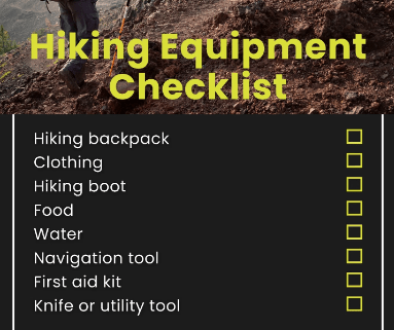Step-by-Step Guide to Choosing the Right Hiking Boots in 2024: Everything You Need to Know
Introduction
When it comes to hiking, your hiking boots are your foundation—literally! Did you know that around 70% of hikers experience foot pain or discomfort during their treks? That’s a staggering number, and it often comes down to the choice of footwear. Wearing the wrong pair can quickly turn a beautiful day on the trails into a miserable, blister-filled experience. So, how do you choose the right hiking boots?
Whether you’re a weekend warrior tackling local trails or a seasoned hiker gearing up for a multi-day backpacking trip, this step-by-step guide will break down everything you need to know. From finding the perfect fit to understanding which materials suit your needs, we’ve got you covered. I remember my first hike—I was so excited, but I wore a pair of old sneakers. By the end of the day, my feet were screaming! Get ready to hit the trails with confidence, knowing your feet will thank you every step of the way!
Understanding Different Types of Hiking Boots
When you step into a hiking store, the first thing you’ll notice is the sheer variety of boots available. It can be overwhelming! Let’s break it down.
- Lightweight Hiking Shoes: Perfect for day hikes and well-maintained trails, these shoes are usually low-cut and provide excellent breathability. I remember using a pair on a sunny day, and my feet felt light as a feather—just the right amount of support without being bulky!
- Mid-Weight Boots: If you’re planning to hit some rocky paths or carry a heavier pack, mid-weight boots are your best friend. They offer more ankle support and durability while still being relatively lightweight. I once tried a pair on a weekend trip and felt like I could conquer any hill!
- Backpacking Boots: These are designed for serious treks, offering maximum support for heavy loads. The added stiffness and protection really come into play when you’re navigating rough terrains. My friend swears by hers for long-distance hikes—they’ve been through mud, snow, and everything in between!
- Mountaineering Boots: If your adventures include icy peaks or steep scrambles, mountaineering boots are essential. They’re often rigid and designed for crampons. Just hearing about them makes me a bit nervous, but they’re invaluable for serious climbers.
For more information on the different types of hiking boots, check out The Outdoor Gear Lab.
How to Get the Right Fit for Hiking Boots
Fit is everything! It doesn’t matter how great a boot looks or its price tag; if it doesn’t fit well, you’re setting yourself up for trouble.
Start by measuring your feet at the end of the day when they’re slightly swollen. Trust me, this makes a world of difference. I’ve made the mistake of trying boots on in the morning, only to regret it later!
- Try on socks: Bring the socks you plan to wear hiking—thicker socks can change the fit dramatically. Make sure you’re comfortable while standing and walking in them.
- Break them in: Don’t forget to give your new boots some love before hitting the trails. I’ve had my fair share of blisters from not breaking in my boots enough. Aim for short walks around the house or local trails.
For detailed fitting tips, visit HikingBoots.com.au.
Material Matters: Leather, Synthetics, and More
Choosing the right material for your boots can impact your hike significantly.
- Leather Boots: These are durable and offer excellent protection against the elements. They can be a bit heavier, but they mold to your foot over time. I’ve had a pair of leather boots for years, and they’ve become so comfy!
- Synthetic Boots: Usually lighter and quicker to dry, these are great for hot weather or wet conditions. However, they may not provide the same level of durability.
- Waterproof vs. Breathable: If you hike in wet climates, waterproof boots can be a lifesaver. But in warmer conditions, you might want something breathable. My friend had a waterproof pair that left her feet soaked in sweat during a summer hike—definitely not ideal!
For more insights on materials, check out Wild Earth.
Tread Carefully: Choosing the Right Sole and Tread Pattern
The sole of your boot plays a huge role in your overall comfort and safety on the trail.
- Rubber Soles: Look for rubber compounds that provide good grip. The tread pattern can make a big difference—deep lugs help on uneven terrain. I’ve slipped on rocks before because my boots had little traction, and it wasn’t fun!
- Ankle Support: If you’re hiking in rocky areas, a boot with good ankle support can prevent twists and sprains. I’ve learned this the hard way after a nasty stumble on a trail!
For advice on tread patterns, see Snowys Outdoors.
Should You Go Waterproof or Not?
Ah, the waterproof debate!
- Benefits of Waterproof Boots: These keep your feet dry in wet conditions, which is crucial in muddy or rainy climates. I was once caught in a downpour, and my waterproof boots saved the day!
- Downsides: However, in hot weather, they can lead to sweaty feet. I’ve had days when my feet felt like they were in a sauna, and that’s no fun. It’s all about knowing your hiking environment.
- For more on waterproof vs. breathable options, check out Bivouac Outdoor.
Essential Features to Look for in Hiking Boots
When it comes to features, every little detail counts!
- Lace Systems: Quick laces can be a lifesaver when you’re on the move. I once got stuck in my laces, and it was not pretty! Traditional laces give you more control, so consider what works best for you.
- Cushioning: Look for boots with ample padding around the ankle and insole. Comfort is key, especially on long hikes. I once hiked a challenging trail with minimal cushioning and paid for it the next day!
For more on essential features, see The Adventure Junkies.
Hiking Boot Accessories You Shouldn’t Ignore
Don’t underestimate the importance of accessories!
- Socks: The right socks can prevent blisters and keep your feet dry. I’ve learned to invest in quality hiking socks—trust me, your feet will thank you!
- Orthotic Insoles: If you have specific foot issues, consider custom insoles. They can enhance comfort and support. I had an old pair that desperately needed them, and once I switched, the difference was night and day!
- Boot Care Products: Treat your boots well! Clean them regularly and use waterproofing sprays when needed. I neglected mine for too long, and they started to lose their water resistance—lesson learned!
For more on boot accessories, visit Anaconda.
Conclusion
Choosing the right hiking boots might seem daunting at first, but breaking it down step-by-step makes it so much easier. Just remember, the right pair can be a game changer, transforming your hiking experience from uncomfortable to absolutely enjoyable. Picture this: you’re on a beautiful trail, the sun shining, and your feet feel fantastic. That’s what it’s all about!
Take your time exploring different options, trying on various pairs, and don’t hesitate to ask questions in the store. Each hike is unique, and so are your needs, so pick what feels right for you. I can’t stress enough how important it is to invest in quality boots that match your adventures.




